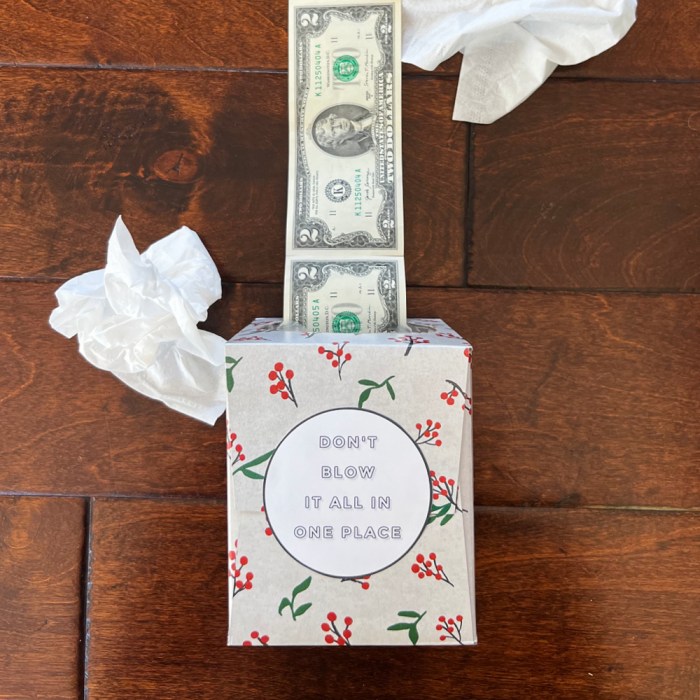
Creative Ways to Save Money at Home
Creative ways to save money at home are more than just a budget-conscious approach; they’re a lifestyle shift that can bring newfound freedom and financial security. From savvy shopping strategies to embracing DIY projects, this guide will empower you to unlock a world of cost-effective solutions without sacrificing quality or comfort.
Whether you’re looking to trim your grocery bill, reduce your energy consumption, or simply find more ways to live frugally, these creative strategies can help you transform your home into a haven of financial wellness. Let’s dive into the practical tips and innovative ideas that can make a real difference in your everyday life.
Reduce Food Costs
Reducing food costs is a crucial aspect of saving money at home. By implementing strategic meal planning and adopting sustainable practices, you can significantly minimize food waste and stretch your grocery budget.
Meal Planning Strategies
Meal planning is essential for reducing food waste. By planning your meals in advance, you can ensure that you purchase only what you need, minimizing the risk of food spoiling in your refrigerator. Here are some effective strategies:
- Create a Weekly Menu:Plan your meals for the entire week, taking into account your family’s preferences and dietary needs. This helps you identify the ingredients you need and avoid impulse purchases.
- Shop with a List:Before heading to the grocery store, create a detailed shopping list based on your weekly menu. This prevents you from buying unnecessary items and ensures you have all the ingredients you need.
- Cook in Bulk:Prepare larger quantities of meals and freeze portions for later consumption. This saves time and money by reducing the number of times you need to cook.
- Utilize Leftovers:Get creative with leftovers. Transform them into new dishes, such as soups, salads, or sandwiches.
Budget-Friendly Recipes
There are countless budget-friendly recipes that are both delicious and nutritious. By incorporating these recipes into your meal planning, you can enjoy tasty meals without breaking the bank. Here are a few examples:
- Lentil Soup:Lentils are an excellent source of protein and fiber, making them a budget-friendly option. This hearty soup can be made with a variety of vegetables and spices.
- Chicken and Rice Casserole:This classic dish is a crowd-pleaser and can be easily adapted to include different vegetables.
- Pasta with Tomato Sauce:A simple and affordable meal that can be made with pantry staples.
- Black Bean Burgers:These protein-packed burgers are a healthy alternative to beef burgers.
Growing Your Own Herbs and Vegetables
Growing your own herbs and vegetables can be a rewarding and cost-effective way to supplement your food supply. By cultivating fresh produce at home, you can reduce your grocery bills and enjoy the taste of homegrown ingredients.
- Choose the Right Plants:Select herbs and vegetables that are suitable for your climate and growing conditions.
- Start Small:Begin with a small herb garden or a few vegetable plants. You can gradually expand your garden as you gain experience.
- Utilize Containers:If you have limited space, consider growing your herbs and vegetables in containers.
- Use Organic Methods:Opt for organic fertilizers and pest control methods to ensure the health of your plants.
Maximizing Pantry Staples
Your pantry is a treasure trove of ingredients that can be used to create a variety of meals. By maximizing your pantry staples, you can reduce your reliance on fresh produce and save money.
From DIY projects to meal prepping, there are tons of creative ways to save money at home. But sometimes, you just need a little boost of inspiration. That’s where you really rock comes in – a website full of tips and tricks for making life a little easier and more affordable.
So, get creative, get inspired, and watch your savings grow!
- Dry Beans and Lentils:These legumes are a versatile and affordable source of protein and fiber. They can be used in soups, stews, salads, and more.
- Rice and Pasta:These pantry staples are inexpensive and can be used to create a wide range of meals.
- Canned Tomatoes:Canned tomatoes are a convenient and affordable ingredient for sauces, soups, and stews.
- Spices and Herbs:Spices and herbs can add flavor and depth to your dishes without adding significant cost.
Cut Down on Energy Consumption
Reducing your home’s energy consumption not only saves you money on your utility bills but also contributes to a greener environment. By making simple changes to your daily habits and upgrading to energy-efficient appliances, you can significantly lower your energy footprint and enjoy substantial savings.
Reducing Electricity Usage
Simple changes in daily habits can significantly reduce your electricity consumption. Here are some practical tips:
- Unplug electronics when not in use: Even when turned off, many electronics continue to draw power, known as “phantom load.” Unplugging chargers, TVs, and other devices when not in use can save a surprising amount of energy.
- Use power strips: Power strips with on/off switches allow you to easily cut off power to multiple devices simultaneously. This is especially helpful for electronics in rooms that are not frequently used.
- Wash clothes in cold water: Most of the energy used in washing clothes goes towards heating the water. Washing clothes in cold water can save a significant amount of energy without compromising cleanliness.
- Air-dry clothes: Avoid using the dryer whenever possible. Line-drying clothes outdoors or using a clothes rack indoors is a great way to save energy and reduce your carbon footprint.
- Reduce water heating: Lowering the temperature of your water heater can significantly reduce energy consumption. Consider setting it to 120°F, which is still hot enough for most household needs.
- Use energy-efficient light bulbs: Replacing traditional incandescent bulbs with LED or CFL bulbs can significantly reduce your electricity bill. These bulbs use less energy and last much longer, resulting in long-term savings.
- Turn off lights when leaving a room: This simple habit can make a big difference in your energy consumption.
Benefits of Energy-Efficient Appliances
Investing in energy-efficient appliances can be a worthwhile investment in the long run. These appliances use less energy, resulting in lower utility bills and a smaller environmental impact.
- Lower energy consumption: Energy-efficient appliances are designed to use less energy than their traditional counterparts. This translates to lower electricity bills and reduced greenhouse gas emissions.
- Longer lifespan: Energy-efficient appliances often have a longer lifespan than traditional models, reducing the need for frequent replacements.
- Government rebates and tax credits: Many governments offer rebates and tax credits for purchasing energy-efficient appliances, making them even more affordable.
Optimizing Natural Lighting and Ventilation
Taking advantage of natural lighting and ventilation can significantly reduce your reliance on artificial light and air conditioning.
- Maximize natural light: Position furniture and decor to maximize natural light. Keep windows clean and unobstructed to allow maximum sunlight penetration.
- Use light-colored walls and furniture: Lighter colors reflect more light, making rooms appear brighter and reducing the need for artificial lighting.
- Open windows for ventilation: Open windows for natural ventilation whenever possible. This can help to cool your home in the summer and reduce the need for air conditioning.
- Use fans: Ceiling fans and portable fans can help circulate air and create a cooling effect, reducing the need for air conditioning.
Choosing Energy-Saving Light Bulbs
Selecting the right light bulbs can significantly impact your energy consumption and lighting quality.
- LED bulbs: LED bulbs are the most energy-efficient option available. They use significantly less energy than traditional incandescent bulbs and last much longer, offering substantial long-term savings.
- CFL bulbs: CFL bulbs are another energy-efficient option. While they use less energy than incandescent bulbs, they are not as efficient as LED bulbs and have a shorter lifespan.
- Incandescent bulbs: Incandescent bulbs are the least energy-efficient option and should be avoided whenever possible.
Shop Smarter
Saving money on groceries and household goods can significantly impact your overall budget. By employing smart shopping strategies, you can stretch your dollars further and enjoy greater financial freedom. This section will explore various techniques for finding the best deals, maximizing coupons and loyalty programs, and assessing the cost-effectiveness of different shopping methods.
Couponing and Loyalty Programs
Utilizing coupons and loyalty programs effectively can unlock significant savings. Many grocery stores and retailers offer digital coupons that can be redeemed directly at the checkout. These coupons often provide discounts on specific products, allowing you to save on items you regularly purchase.
Additionally, loyalty programs can provide personalized discounts and rewards based on your shopping habits.
Finding creative ways to save money at home can be a fun challenge, and it’s amazing how often simple DIY projects can make a big difference. For example, instead of buying a fancy centerpiece for Thanksgiving, check out this awesome article on a functional thanksgiving center piece for a few buckaroos – it’s a great way to save money and add a personal touch to your table.
The possibilities are endless when it comes to saving money at home, so don’t be afraid to get creative!
- Create an Account:Sign up for loyalty programs at your favorite stores to access exclusive deals and personalized offers.
- Download Coupon Apps:Several mobile apps allow you to browse and clip coupons for various products. These apps can help you find deals on groceries, household goods, and even dining.
- Combine Offers:Take advantage of opportunities to combine coupons and loyalty program discounts for maximum savings. Check for store-specific promotions and coupons that can be used in conjunction with your loyalty program points.
Embrace DIY Projects
Taking on DIY projects can be a fantastic way to save money and add a personal touch to your home. By learning basic skills and utilizing readily available resources, you can tackle a variety of tasks that would otherwise require professional help, significantly reducing your expenses.
Simple DIY Projects for Home Repairs and Upgrades
DIY projects can range from simple repairs to more extensive upgrades. Here are some examples of simple DIY projects that can save you money on repairs or upgrades:
- Patching drywall:Small holes or cracks in your drywall can be easily patched with a little spackle and paint. You can find detailed instructions online or at your local hardware store.
- Replacing faucets:Leaky faucets can waste a lot of water and money. Replacing a faucet is a relatively simple project that can be done with basic tools and a little patience.
- Installing light fixtures:Upgrading your light fixtures can enhance the ambiance of your home and save energy. Installing new fixtures is usually straightforward, especially if you choose fixtures that are compatible with your existing wiring.
- Painting walls:A fresh coat of paint can transform a room and make it feel brand new. Painting is a relatively easy DIY project that can be done with minimal tools and supplies.
Creating Your Own Cleaning Products and Personal Care Items
Making your own cleaning products and personal care items is a great way to save money and reduce your exposure to harsh chemicals. Here are some ideas for DIY cleaning and personal care products:
- All-purpose cleaner:Combine equal parts white vinegar and water in a spray bottle. Add a few drops of essential oil for a pleasant scent.
- Dish soap:Combine 1 cup of grated soap (like Dr. Bronner’s) with 1 cup of water and 1 tablespoon of glycerin in a blender. Blend until smooth and store in a container.
- Body scrub:Mix 1 cup of sugar or salt with 1/2 cup of oil (like coconut oil or olive oil) and a few drops of essential oil.
Repurposing Old Items into New, Functional Objects
Instead of discarding old items, consider repurposing them into something new and useful. Here are some ideas for repurposing old items:
- Turn old jars into storage containers:Clean glass jars can be used to store spices, dry goods, or other small items.
- Use old pallets to create furniture:Pallets can be disassembled and used to build coffee tables, shelves, or even beds.
- Transform old clothing into rags or cleaning cloths:Old t-shirts, towels, or sheets can be cut into rags or cleaning cloths.
Learning Basic Repair Skills for Common Household Items
Knowing how to repair common household items can save you money on professional repair services. Here are some basic repair skills you can learn:
- Sewing:Learn how to sew buttons, mend tears, and alter clothing. A sewing machine is not essential for basic repairs.
- Plumbing:Learn how to fix leaky faucets, unclog drains, and replace toilet flappers.
- Electrical:Learn how to change light bulbs, replace outlets, and install simple switches.
Minimize Unnecessary Spending: Creative Ways To Save Money At Home
Unnecessary spending can significantly impact your financial well-being, making it challenging to reach your financial goals. Understanding common areas of overspending and implementing strategies to curb these habits can help you save more and achieve financial freedom.
Identify Common Areas of Overspending
Identifying common areas of overspending in a household budget is crucial to understand where your money is going and make informed decisions about your spending habits.
- Dining Out:Eating out frequently can quickly drain your budget. While enjoying meals outside is enjoyable, it’s important to be mindful of the costs associated with dining out. A 2023 study by the National Restaurant Association found that the average American household spends $3,000 annually on dining out.
One of my favorite ways to save money at home is by making use of what I already have. This can mean getting creative with meal planning, repurposing old clothes, or even finding new ways to motivate myself to exercise.
I’ve found that wearing clothes that motivate you to work out can be a great way to get yourself moving, which in turn saves money on gym memberships! It’s all about finding those little hacks that add up to big savings in the long run.
- Subscriptions:Streaming services, gym memberships, and other subscriptions can add up quickly, especially if you’re not using them actively. Regularly review your subscriptions and cancel those you don’t use or need.
- Impulse Purchases:Making unplanned purchases, often triggered by emotions or advertising, can significantly impact your budget. Before making a purchase, ask yourself if you truly need it and if it aligns with your financial goals.
- Entertainment:Movies, concerts, and other entertainment activities can be costly. Consider exploring free or low-cost alternatives like local events, parks, and museums.
- Shopping Habits:Unnecessary shopping, especially online, can lead to overspending. Develop a shopping list, stick to it, and avoid browsing online stores when you’re not planning to buy anything.
Set Realistic Financial Goals and Track Spending
Setting realistic financial goals and tracking your spending are essential for managing your finances effectively.
- Define Your Goals:Start by identifying your short-term and long-term financial goals. This could include saving for a down payment on a house, paying off debt, or building an emergency fund.
- Create a Budget:A budget helps you allocate your income to different categories, such as housing, food, transportation, and entertainment. There are various budgeting methods, such as the 50/30/20 rule, where 50% of your income goes towards essential expenses, 30% towards discretionary spending, and 20% towards savings and debt repayment.
- Track Your Spending:Use a budgeting app, spreadsheet, or notebook to track your spending for a month or two. This will help you identify areas where you can cut back.
- Review Your Budget Regularly:Review your budget regularly to ensure it aligns with your financial goals and spending habits. Make adjustments as needed to stay on track.
Avoid Impulse Purchases and Make Informed Decisions, Creative ways to save money at home
Impulse purchases are often driven by emotions or advertising, leading to unplanned spending. Here are some strategies to avoid impulsive buying and make informed decisions:
- Wait 24 Hours:Before making a significant purchase, wait 24 hours to see if you still want it. This gives you time to reflect on the purchase and consider alternatives.
- Shop with a List:Create a shopping list and stick to it. This helps you avoid buying items you don’t need.
- Unsubscribe from Marketing Emails:Unsubscribing from promotional emails can reduce the temptation to buy items you don’t need.
- Compare Prices:Before making a purchase, compare prices from different retailers to ensure you’re getting the best deal.
- Focus on Value, Not Price:Consider the value of a product or service, not just the price. A higher-priced item might be worth it if it lasts longer or provides more value.
Budgeting and Prioritizing Essential Expenses
Budgeting is essential for managing your finances effectively and prioritizing essential expenses.
- Track Your Income and Expenses:Use a budgeting app, spreadsheet, or notebook to track your income and expenses for a month or two. This will help you identify areas where you can cut back.
- Prioritize Essential Expenses:Focus on essential expenses such as housing, food, transportation, and healthcare. These expenses are necessary for your basic needs and should be prioritized in your budget.
- Allocate Funds for Savings and Debt Repayment:Set aside a portion of your income for savings and debt repayment. This helps you build financial security and achieve your financial goals.
- Review Your Budget Regularly:Review your budget regularly to ensure it aligns with your financial goals and spending habits. Make adjustments as needed to stay on track.
Utilize Free Resources

In today’s world, it’s easy to feel like you need to spend money to have fun, learn new things, or stay fit. But there are plenty of free or low-cost resources available that can help you save money without sacrificing your enjoyment.
Free Entertainment Options
Free entertainment options are abundant and offer a fantastic way to have fun without breaking the bank.
- Parks:Parks offer a great way to enjoy the outdoors, get some exercise, and relax. Many parks have playgrounds, walking trails, picnic areas, and even free events like concerts or movie nights.
- Libraries:Libraries are a treasure trove of free resources, including books, magazines, movies, music, and even free Wi-Fi. They also often host free events like book clubs, author talks, and children’s programs.
- Community Events:Many communities offer free or low-cost events throughout the year, such as farmers markets, festivals, concerts, and art walks. Check your local newspaper, community calendar, or social media for upcoming events.
Free or Low-Cost Online Courses and Educational Resources
The internet has opened up a world of free or low-cost educational opportunities.
- Massive Open Online Courses (MOOCs):Platforms like Coursera, edX, and Udacity offer thousands of free or low-cost online courses from top universities and institutions around the world.
- Khan Academy:Khan Academy provides free educational resources for a wide range of subjects, including math, science, history, and computer programming.
- YouTube Channels:Many YouTube channels offer free educational content, including tutorials, lectures, and documentaries.
Free or Discounted Fitness Classes and Activities
Staying active doesn’t have to be expensive.
- Parks and Recreation Departments:Many parks and recreation departments offer free or low-cost fitness classes, such as yoga, Zumba, and boot camp.
- Community Centers:Community centers often offer free or low-cost fitness classes and activities, such as swimming, basketball, and dance.
- Free Fitness Apps:There are numerous free fitness apps available that offer workout routines, tracking tools, and motivational tips.
Borrowing Items Instead of Purchasing Them
Before you buy something new, consider whether you can borrow it instead.
- Libraries:Libraries lend out more than just books. Many libraries also lend out items like tools, games, and even musical instruments.
- Friends and Family:Don’t hesitate to ask friends and family if they have items you can borrow, such as tools, kitchen appliances, or even clothes.
- Neighborhood Sharing Platforms:Apps like NeighborGoods and BorrowMyThings connect people in your neighborhood who are willing to lend out items.
Reduce Waste and Reuse

Reducing waste and reusing items are essential for saving money and minimizing your environmental impact. By implementing strategies to minimize waste in your daily routines, you can significantly reduce your spending on disposable products and contribute to a more sustainable lifestyle.
Kitchen Waste Reduction
Minimizing waste in the kitchen is crucial for reducing food spoilage and saving money on groceries. Here are some practical strategies to adopt:
- Plan your meals:Create a weekly meal plan to avoid impulse purchases and ensure you only buy what you need. This helps prevent food waste from unused ingredients.
- Store food properly:Use airtight containers and follow recommended storage guidelines for fruits, vegetables, and other perishable items. This helps extend their shelf life and reduces waste.
- Use leftovers creatively:Repurpose leftover ingredients into new dishes, such as soups, stews, or salads. This prevents food from going to waste and adds variety to your meals.
- Compost food scraps:Start a compost bin to recycle food scraps and yard waste into nutrient-rich fertilizer for your garden. This reduces the amount of waste sent to landfills and provides a natural source of nutrients for your plants.
Bathroom Waste Reduction
The bathroom is another area where you can significantly reduce waste by adopting sustainable practices:
- Choose reusable alternatives:Swap out disposable items like cotton rounds, makeup wipes, and razors with reusable alternatives made from bamboo, microfiber, or stainless steel. This reduces plastic waste and saves money over time.
- Use bar soap instead of liquid soap:Bar soap comes in less packaging and often lasts longer than liquid soap. This reduces waste and saves money in the long run.
- Repurpose old towels and washcloths:Instead of throwing away old towels and washcloths, repurpose them as cleaning rags or donate them to animal shelters. This reduces textile waste and extends the life of these items.
Laundry Room Waste Reduction
The laundry room often generates a significant amount of waste, but there are ways to minimize it:
- Wash clothes less frequently:Only wash clothes when they are visibly dirty. This reduces water and energy consumption and extends the life of your clothes.
- Air dry clothes:Whenever possible, air dry clothes instead of using a dryer. This saves energy and reduces wear and tear on your clothes.
- Use reusable dryer balls:Replace dryer sheets with reusable dryer balls made from wool or rubber. This reduces waste and helps soften clothes naturally.
Repurposing and Recycling
Repurposing and recycling household items is an excellent way to reduce waste and save money. Here are some creative ideas:
- Turn old jars into storage containers:Clean glass jars from food products can be reused as storage containers for spices, beans, or other dry goods.
- Repurpose old clothing into cleaning rags or craft projects:Old t-shirts, towels, and other clothing items can be cut into cleaning rags or used for craft projects.
- Recycle cardboard boxes and paper:Cardboard boxes and paper can be reused for packing materials, crafts, or even as a base for building small projects.
- Donate unwanted items:Instead of throwing away items you no longer need, donate them to charities or thrift stores. This gives items a second life and helps others in need.
Reducing Packaging Waste
Packaging waste is a significant environmental concern, and reducing it is essential for a sustainable lifestyle. Here are some strategies to adopt:
- Buy in bulk:Purchasing items in bulk often comes with less packaging per unit, reducing waste and saving money.
- Choose products with minimal packaging:Opt for products with minimal packaging, such as bar soap, loose vegetables, and unpackaged food items.
- Bring your own bags and containers:When shopping for groceries or other items, bring your own reusable bags and containers to reduce plastic waste and save money on disposable bags.
- Support companies with sustainable packaging:Look for companies that use eco-friendly packaging materials, such as recycled paper or biodegradable plastics.
Benefits of Composting
Composting is a natural process that transforms organic waste into nutrient-rich fertilizer. It offers several benefits, including:
- Reduces landfill waste:Composting diverts food scraps and yard waste from landfills, reducing the amount of methane gas produced by decomposing organic matter.
- Improves soil health:Compost enriches the soil with nutrients, improving its structure, water retention, and aeration. This results in healthier and more productive gardens.
- Reduces the need for chemical fertilizers:Compost provides natural nutrients to plants, reducing the need for synthetic fertilizers that can harm the environment.
- Saves money:By composting, you can reduce your reliance on store-bought fertilizers, saving money on gardening supplies.
Embrace a Minimalist Lifestyle
Minimalism is a lifestyle that emphasizes intentional living and owning only what you need and use. It’s not about deprivation but about focusing on what truly matters. Embracing minimalism can lead to significant financial savings, as you’ll be spending less on unnecessary purchases, storage, and maintenance.
Decluttering and Simplifying Your Home
Decluttering and simplifying your home is the first step towards a minimalist lifestyle. It involves getting rid of items you no longer use, need, or love. This can be a daunting task, but it’s crucial for creating a more peaceful and organized living space.
- Start Small:Don’t try to declutter your entire home at once. Start with one area, like a closet or a drawer, and work your way up.
- Ask Yourself Questions:When deciding what to keep, ask yourself questions like “Do I use this regularly?”, “Does this bring me joy?”, and “Would I buy this again?”.
- Don’t Be Afraid to Let Go:It’s okay to get rid of items that you haven’t used in a long time, even if they have sentimental value.
- Utilize the 4-Box Method:This method involves creating four boxes labeled “Keep,” “Donate,” “Trash,” and “Maybe.” As you declutter, sort items into the appropriate boxes.
- Consider Selling or Trading:If you have items that are in good condition, consider selling them online or at a consignment shop. This can help you offset the cost of decluttering.
Benefits of Downsizing and Living with Less
Downsizing, or living with less, offers several benefits, including:
- Financial Savings:You’ll spend less on rent, utilities, and other expenses associated with a larger home.
- Reduced Stress:A cluttered and overwhelming home can lead to stress and anxiety. Downsizing can help create a more peaceful and relaxing environment.
- Increased Freedom:When you have less stuff, you have more freedom to travel, pursue hobbies, and enjoy life.
- Environmental Sustainability:By consuming less, you’re reducing your environmental impact.
Creating a Minimalist Capsule Wardrobe
A capsule wardrobe is a collection of essential clothing items that can be mixed and matched to create a variety of outfits. It’s a great way to simplify your wardrobe and save money on clothing purchases.
- Choose a Color Palette:Start by selecting a few neutral colors that you love and that can be easily mixed and matched.
- Identify Your Essentials:Determine the essential clothing items you need for your lifestyle. This might include a few pairs of jeans, a couple of skirts, a few tops, a blazer, and a dress.
- Invest in Quality:When you’re buying fewer items, it’s important to invest in high-quality pieces that will last longer.
- Try the 30-Item Challenge:This challenge involves limiting your wardrobe to 30 items of clothing, shoes, and accessories. It can be a great way to see how much you can live with less.




